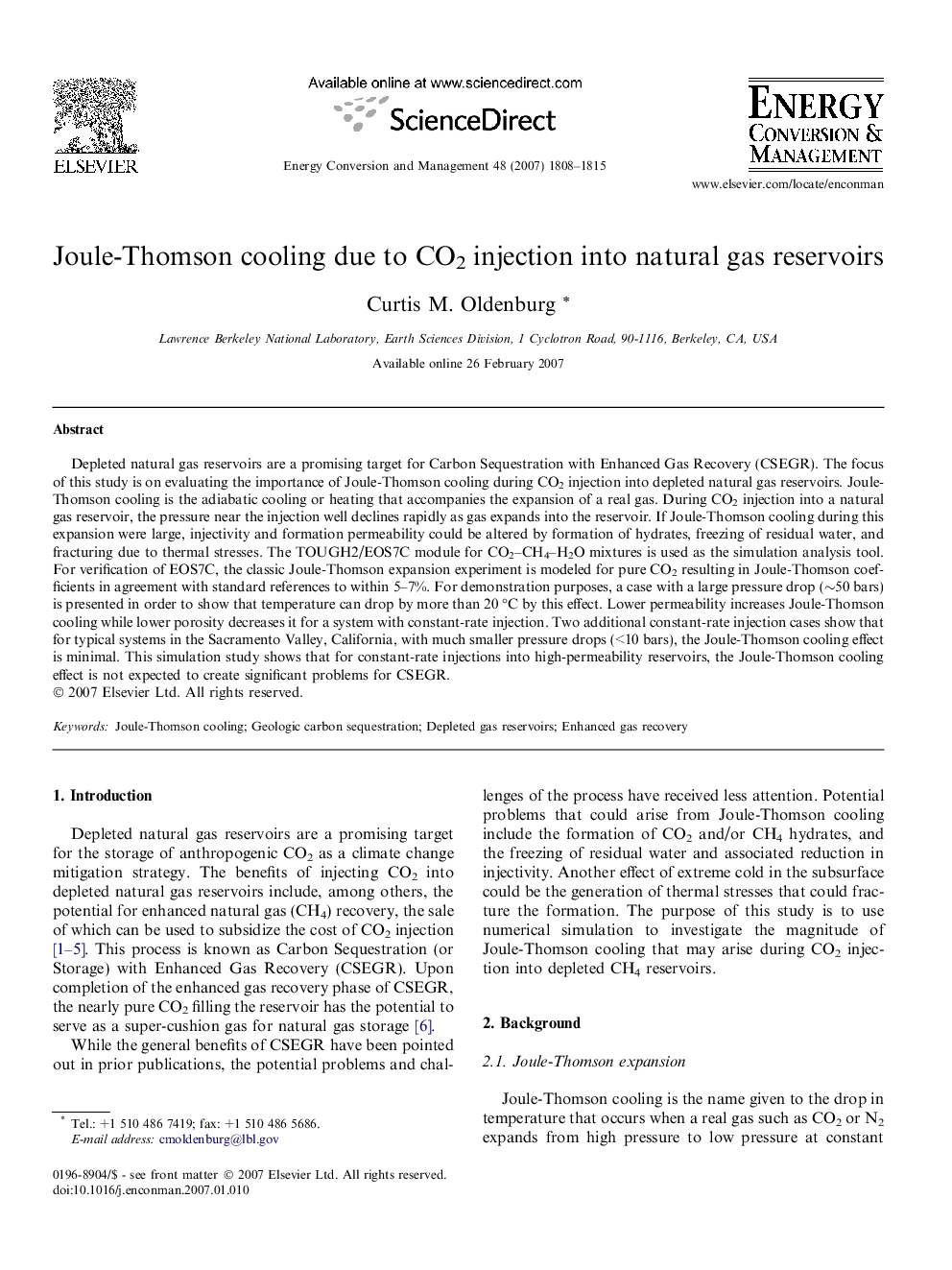| Article ID | Journal | Published Year | Pages | File Type |
|---|---|---|---|---|
| 765328 | Energy Conversion and Management | 2007 | 8 Pages |
Depleted natural gas reservoirs are a promising target for Carbon Sequestration with Enhanced Gas Recovery (CSEGR). The focus of this study is on evaluating the importance of Joule-Thomson cooling during CO2 injection into depleted natural gas reservoirs. Joule-Thomson cooling is the adiabatic cooling or heating that accompanies the expansion of a real gas. During CO2 injection into a natural gas reservoir, the pressure near the injection well declines rapidly as gas expands into the reservoir. If Joule-Thomson cooling during this expansion were large, injectivity and formation permeability could be altered by formation of hydrates, freezing of residual water, and fracturing due to thermal stresses. The TOUGH2/EOS7C module for CO2–CH4–H2O mixtures is used as the simulation analysis tool. For verification of EOS7C, the classic Joule-Thomson expansion experiment is modeled for pure CO2 resulting in Joule-Thomson coefficients in agreement with standard references to within 5–7%. For demonstration purposes, a case with a large pressure drop (∼50 bars) is presented in order to show that temperature can drop by more than 20 °C by this effect. Lower permeability increases Joule-Thomson cooling while lower porosity decreases it for a system with constant-rate injection. Two additional constant-rate injection cases show that for typical systems in the Sacramento Valley, California, with much smaller pressure drops (<10 bars), the Joule-Thomson cooling effect is minimal. This simulation study shows that for constant-rate injections into high-permeability reservoirs, the Joule-Thomson cooling effect is not expected to create significant problems for CSEGR.
